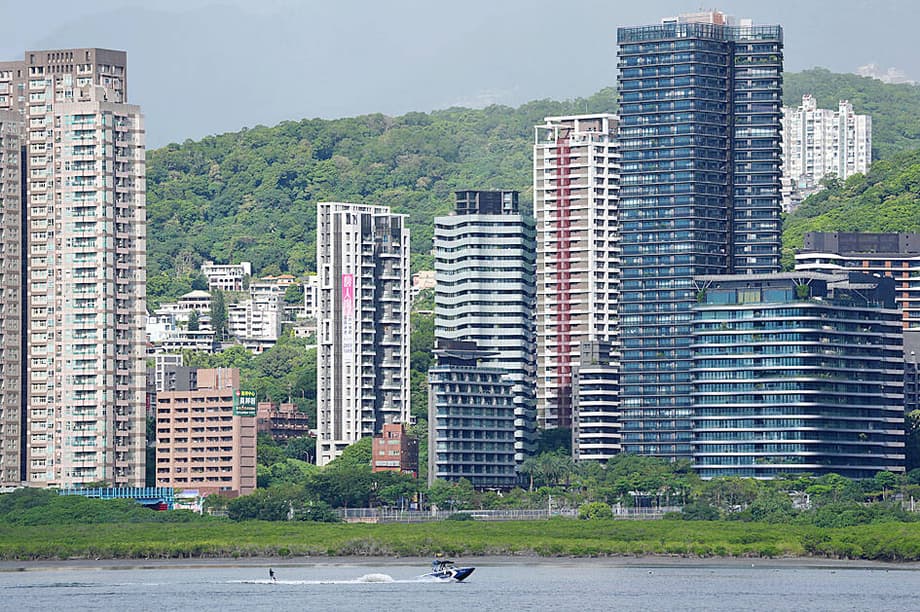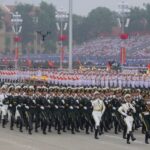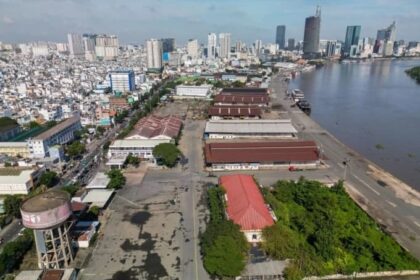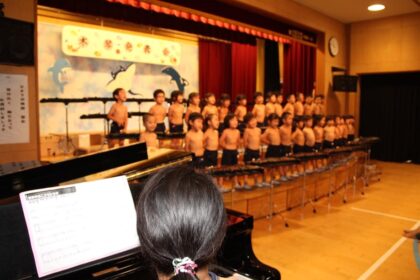Why this matters now
Taiwan is entering a new housing era driven by age. The Ministry of the Interior reports that about 850,000 residences were occupied by elderly people in the first quarter, including roughly 655,000 homes with just one resident. Both totals are close to double the figures of a decade ago. People aged 65 and above now account for 20.8 percent of the population, which places Taiwan firmly in the super aged category. This shift is not only demographic. It is changing how homes are used, who lives alone, what features buyers seek, and where developers and investors see opportunity.
- Why this matters now
- Where the trend is strongest
- What is driving more seniors to live alone
- Prices, policy, and the new demand curve
- Rural Taiwan and the housing puzzle
- The next wave of housing: design with age in mind
- Financing aging in place
- How developers and the state are adapting
- Risks for investors, cities, and families
- What to watch between 2025 and 2035
- The Bottom Line
Real estate researchers say the pattern is most obvious in the six largest metro areas. The number of elderly occupied homes has jumped across Taipei, New Taipei City, Taoyuan, Taichung, Tainan, and Kaohsiung. A rising share of those units house a single older resident. With the elderly population set to exceed one quarter within the next decade, demand for age friendly homes, accessible design, and community based care is rising. That demand will pull at the supply side of the market and at public policy, from building codes to neighborhood services.
Great Home Realty research director Lai Chih chang puts it bluntly. The country is facing a silver tsunami that could reorder housing choices and prices. He argues that an older population alters both the homes people want and the pace at which units turn over, because many seniors choose to age in place rather than move frequently.
Great Home Realty research director Lai Chih chang said, “It could fundamentally redefine the balance of supply and demand in the housing market.”
Where the trend is strongest
City patterns help explain the scale. Taipei counted about 116,000 elderly occupied homes in 2025, up roughly 71 percent from 2016. New Taipei City had about 165,000 such homes, up 108 percent and the highest nationwide. Taoyuan saw the fastest rise, growing 128 percent to around 67,000 units. Taichung reached about 80,000, up 111 percent. In the south, Tainan rose 77 percent to about 67,000, while Kaohsiung climbed 91 percent to nearly 109,000.
Single resident households tell a similar story. Taipei had around 89,000 homes occupied by one elderly person, up 71 percent from 2016. New Taipei City counted about 131,000, up 109 percent. Taoyuan again led growth with a 132 percent increase to around 52,000 homes, and Taichung reached about 60,000, up 118 percent. Tainan and Kaohsiung also posted large gains, up about 84 percent and 95 percent respectively. These figures suggest that more seniors are living alone, especially in or near fast growing suburban and new town districts.
H&B Realty chief researcher Jessica Hsu says the shift is changing what buyers and renters prioritize. Elevators, barrier free layouts, and quick access to clinics or hospitals have moved from nice to have to must have for many households with elderly members.
H&B Realty chief researcher Jessica Hsu said, “Growing demand for age friendly housing, especially units with elevators, barrier free design, and proximity to healthcare, is reshaping Taiwan’s property landscape.”
What is driving more seniors to live alone
Three forces dominate. First, household sizes are smaller than before, with more adult children forming separate households earlier in life. Second, new residential zones on transit lines around New Taipei City, Taoyuan, and Taichung have attracted younger buyers and renters who find Taipei costs too high. Third, urban redevelopment and reconstruction have changed neighborhood composition, prompting some intergenerational households to split as older buildings give way to new product that is more expensive and often designed for smaller families.
Municipal data illustrates the migration effect. Taipei’s population fell below 2.5 million in late 2024. City officials attribute the drop to living and housing costs that push families to nearby areas where prices are lower but commutes remain workable. Most who exit move to New Taipei City and Taoyuan. That movement often leaves older parents in place in Taipei or in older neighborhoods in neighboring cities, especially in walk up buildings that lack elevators.
These trends combine with a strong cultural preference to age in place. Many seniors choose to stay in the same community where they have long established social ties. That raises demand for in home support, better building accessibility, and nearby services without requiring a full relocation to a care facility.
Prices, policy, and the new demand curve
Economic and demographic research suggests that aging does not uniformly push prices down. A recent study of Taiwan districts from 2013 to 2023 found that areas with a higher old age dependency ratio tended to have higher housing prices, especially in urban cores and new towns. By contrast, areas with higher youth dependency ratios saw lower prices as households faced greater financial pressure from childcare and schooling costs. Mortgage costs and loan to value rules still matter. The same study reported that higher mortgage rates depressed urban prices while looser loan to value settings were associated with higher suburban prices. Yet those policy variables did not change the influence of dependency ratios on prices. Broader macro factors like money supply, inflation, growth, and job markets had a larger role.
Another line of research points to the financial stability of many older adults in Taiwan. A peer reviewed analysis linked growth in money supply and robust mortgage issuance to persistent price strength over the past decade. It also noted that older adults often have more savings, which buffers demand for certain types of housing and slows forced selling. That helps explain why prices did not fall even as the population aged and growth slowed in some regions.
Near term market data shows how policy affects activity. The Ministry of Finance recorded a steep drop in land value increment tax receipts in 2025 as real estate transactions slowed, particularly in Taipei, New Taipei City, and Kaohsiung. Tighter mortgage rules from the central bank reduced speculative buying and made it harder to finance multiple home purchases. Prices may still hold in transit connected districts and in areas with strong demand for age friendly units, but the turnover rate has cooled.
Rural Taiwan and the housing puzzle
Classic life cycle theory says an aging population should reduce housing demand over time as older households downsize and fewer young families form. Yet an open access 2024 study of Taiwan’s rural and urban housing markets identified a different pattern in rural areas. Rural prices increased faster than many city prices despite rapid aging in the countryside. Using a cointegration framework, the authors found a long run link between housing prices and aging measures, and they showed that short term deviations from this relationship predict future rural prices and migration flows. Urban prices did not show the same predictive pattern.
Why might rural areas behave differently? The evidence points to policy and lifestyle changes that attract younger households back to rural or peripheral towns. Affordable land, new factories or logistics parks, and improved transit can offset the drag from aging. When rural prices run above the long run trend implied by demographics, the gap can later pull in new residents and investment. That dynamic supports rural revitalization strategies, including programs that pair housing with jobs and services.
For policymakers, the lesson is practical. Demographics set a slow moving baseline. Local investment, transport links, and employer decisions can move actual prices away from that baseline for long stretches. Planning rules should reflect both forces. For readers who want the technical details, the open access paper on rural housing cointegration in Taiwan is available here: peer reviewed analysis of rural price and aging dynamics.
The next wave of housing: design with age in mind
The market response is already visible. Buyers and renters are asking about elevators in mid rise buildings, no step entries, wider corridors, reinforced bathrooms, and brighter lighting. Proximity to primary care clinics, pharmacies, and hospitals ranks higher on search lists. So does distance to parks, community centers, and mass transit that does not require stairs. For existing walk ups, elevator retrofits and barrier free upgrades can extend the life of older buildings while keeping long time residents in place.
Global investors see three themes in countries with aging populations. First, there is a supply shortage of dedicated senior care facilities in many markets. Second, there is growing value in refurbishing under used assets in cities for senior living and outpatient care. Third, alternative property types that cater to older consumers, such as medical office and day care centers, are likely to see durable demand. Taiwan’s urban core districts with easy access to transit and hospitals are natural candidates for these strategies.
Conversions can help. Office to clinic or office to assisted living projects can reuse well located buildings that no longer fit work patterns. That approach fits Taiwan’s large stock of mid rise offices and mixed use properties in prime districts. It also brings seniors closer to groceries, transit, and city services, which reduces isolation and travel time.
Financing aging in place
Many seniors are asset rich and cash constrained. Reverse mortgage models try to address that gap by turning home equity into income while the owner stays in place. Taiwan has explored several approaches, including bank issued reverse mortgages, an insurance led sell and rent model with annuity payments, and arrangements with social welfare groups in exchange for care. Each model carries trade offs. There are concerns about inheritance, property values over time, and the risk that a person might outlive the value of the home.
Global experience suggests that government support and consumer protections are essential. Standardized disclosures, counseling, and clear caps on fees can reduce mistakes. Public insurance or guarantees can make the product viable for lenders, especially when property markets slow. Cultural attitudes toward passing homes to children remain a barrier in Taiwan. Even so, as family sizes shrink and more seniors live alone, interest in equity release tends to rise. A clear legal and consumer protection framework can make that interest safer to meet. Background on Taiwan’s early reverse mortgage discussions is available here: reverse mortgage overview.
How developers and the state are adapting
Developers face pressure to build and retrofit for accessibility. That includes more two bedroom units designed for a single older adult and a part time caregiver, larger elevators, and flats with universal design. Street level planning matters too. Safe crossings, benches, and shade increase daily mobility for older residents and improve life for everyone.
On the finance side, Taiwan’s life insurers hold large investment portfolios and are being encouraged to bring more mandates onshore. Long duration assets that generate stable income, such as senior housing, medical office, and community clinics, fit insurance balance sheets. With the right regulatory rules and yield profile, this pool of capital can help finance age oriented projects without excessive reliance on short term debt.
Public programs can speed upgrades in existing buildings. Subsidies for barrier free renovations, tax credits for elevator installation in older mid rises, and faster approvals for retrofits can make a visible difference in a few years. Zoning codes that allow conversion of under used offices into residential or care uses can expand supply in city centers without large greenfield projects.
Risks for investors, cities, and families
Taiwan’s housing market carries well known risks. Prices in some districts remain high relative to incomes and rental yields are low by international standards. That makes investment returns sensitive to entry price and holding period. Geopolitical risk also features in many foreign investor assessments. These risks do not cancel the structural demand for age friendly housing, but they make location selection and underwriting more important.
Neighborhood level risks are equally important. Many older buildings lack elevators and have small bathrooms that are hard to retrofit. If those properties do not upgrade, seniors may become stranded in their homes or be forced to move away from familiar neighborhoods. Caregiver shortages are another constraint. Without a deeper pool of trained aides and nurses, building more age friendly homes will not deliver the full benefit. City governments can help by coordinating transport, home visit services, and telehealth pilots in districts with large senior populations.
Household finance is a third risk. Reverse mortgages and equity release can help some owners, but renters and seniors without property need a different toolkit. Stable rental housing with accessible design and proximity to clinics is the core. A mix of public private partnerships, targeted vouchers, and community care can reduce the burden on families and keep seniors connected to their communities.
What to watch between 2025 and 2035
Demographics will continue to set the backdrop. Taiwan’s share of residents aged 65 and above is on track to exceed one quarter by the early to mid 2030s. The mix between metro cores, new towns, and rural areas will matter. Urban districts with strong transit and hospital access should remain more resilient. Suburban and new town areas connected to mass transit are likely to grow as younger households seek space and lower costs. Some rural areas with new jobs or logistics hubs can outperform despite aging.
Policy choices will shape outcomes. Mortgage settings and land use rules influence how fast prices adjust. Programs that fund elevator retrofits and barrier free upgrades can keep seniors in place and stabilize neighborhoods. Legal frameworks for equity release can support retirees who are cash constrained. Finally, better data at the district and neighborhood level will help planners target services where single elderly households are clustered.
The Bottom Line
- About 850,000 homes were occupied by elderly people in early 2025, including roughly 655,000 single resident units
- People aged 65 and above account for 20.8 percent of Taiwan’s population, and the share is rising
- New Taipei City has the most elderly occupied homes, while Taoyuan has seen the fastest growth
- Smaller households and youth migration to transit connected suburbs are leaving more seniors to live alone
- Research shows higher old age dependency ratios correlate with higher prices in urban and new town areas
- A 2024 study found rural Taiwan prices and aging are linked in the long run and deviations predict future rural prices and migration
- Demand is shifting toward age friendly homes with elevators, barrier free design, and proximity to healthcare
- Reverse mortgage models can help seniors age in place, but require clear consumer protections
- Insurers and developers can fund and deliver senior housing, medical office, and conversions of under used buildings
- Risks include high price to income levels, low yields, and the need to upgrade many older walk up buildings












